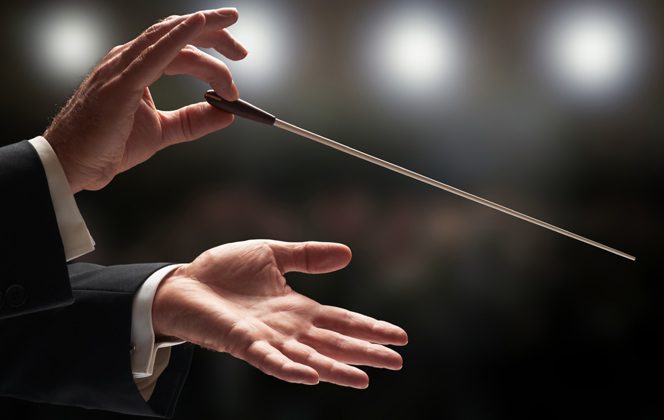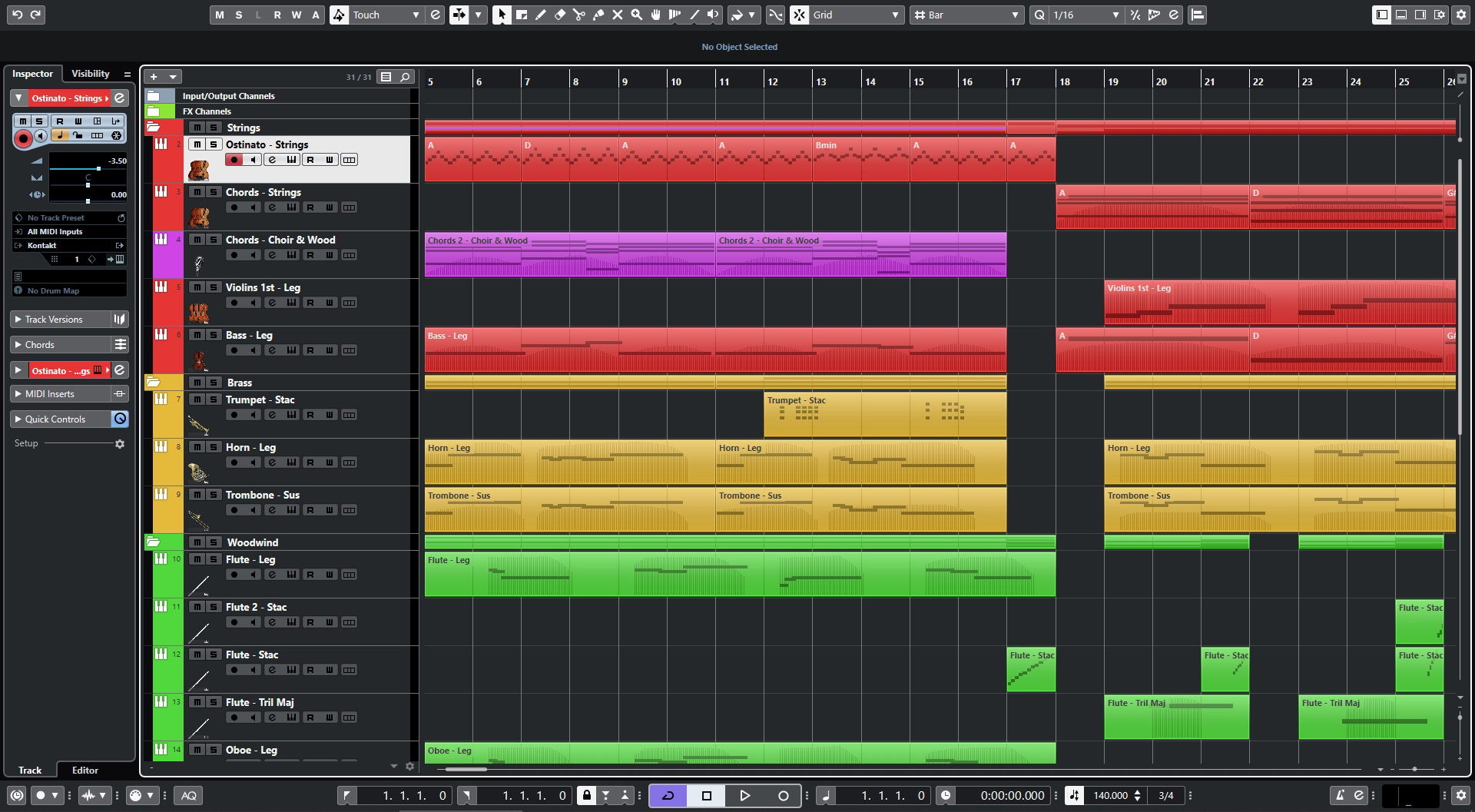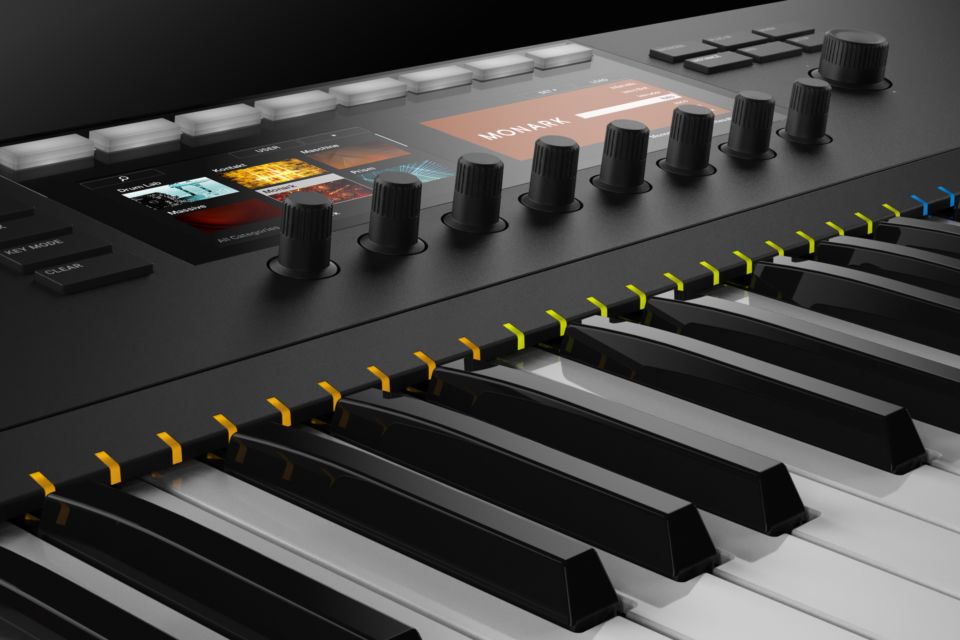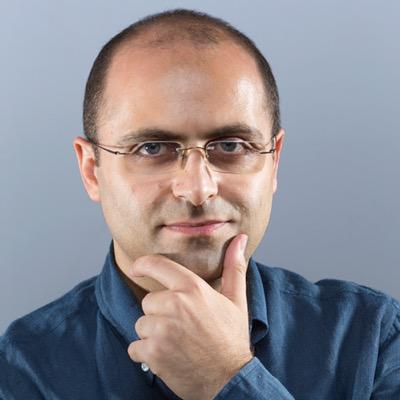
What is Orchestration Essentials?
Orchestration Essentials is the foundation of composing orchestral music which is used heavily today in cinematic music tracks. Whether you are totally new to this domain or you are just starting, this course is surely for you.
The course addresses various important topics in the music domain like Music Theory, Harmony, Melody, Texture, Rhythm, and much more. You will learn everything needed to realize your music ideas and get them to life. The course is based on video explanation, and all the videos are in Arabic language (بالعربية).
By the end of this course you will be able to compose and produce music similar to the music used in today’s movie industry, and who knows, maybe one day we hear your music in a real movie in the future. So, what are you waiting for?
The Music that we will create in the course:
AD 1 Music for the course:
AD 2 Music for the course:
What will you get in this course?
- Detailed videos in Arabic language explaining all the Orchestration Essentials
- Downloadable content supporting the videos
- Tips and tricks to speed your work
- Explanation of the needed software and comparison between brands
- All future updates for this course for FREE
- Lifetime Access


What should you know/have before starting the course?
- Basic knowledge in music (no Music Theory is needed)
- No need to know how to play a music instrument, but if you do it will be a plus
- You should have a computer
- Basic computer knowledge
- And that’s all!
Course Numbers!
Orchestration Essentials Outline
1- Introduction
- Welcome to the course
- What do you need for the course?
- What is a DAW?
- Needed Software and VSTs
- FREE & Paid VSTs List
- Reverb
- Cubase Primer
2- Music Theory Primer
- What is Music Theory
- Tone, Semitone, Scale, and Octave
- Major Scales
- Minor Scales
- Beat, Note Value, and Tempo
- Music Signature
- Finding the Time Signature of a Song
- Komplete Kontrol Keyboard
3- Melody
- What is Melody?
- Structure of a good Melody
- How to start your Melody?
- Orchestration Styles
- Building up our Melody
- Finding Signature of Our Melody
- Question Answer
- What comes first, Melody or Harmony?
4- Harmony
- What is Harmony?
- Triad Chords
- Chord Voicings
- Chord Inversions
- Chord Suspensions
- Chord Extensions
- Diminished and Augmented chords
- What to Repeat in Chords?
- Chord Progressions
- Finding Chords for Melody
- Writing Melody to Chords
- Circle of Fifths
5- Important Musical Elements
- Counter Melody
- Pedals/Drones
- Ostinato
- Rhythm
- Texture
6- Strings
- Violin
- Viola
- Cello
- Bass
- Harp
- Chords with Strings
- Melody
- Drones and Atmosphere
7- Brass
- Trumpet
- Horn
- Trombone
- Tuba
- Chords with Brass
- Melody
- Effects with Brass
8- Woodwind
- Flute & Piccolo
- Oboe
- Clarinet
- Bassoon
- Effects with Woodwind
9- Percussion
- Timpani
- Cymbal
- Snare Drum
- Bass Drum
- Gong
- Taiko Drums
- Piano
- Epic Drums
- Writing beats for Epic Drums
10- Choir
- Choir
- Different Choir VSTs
- Word Builder Choir
- Solo Choir
11- Building A Music Track
- Finding the Idea
- Converting the Idea to Melody
- Finding the Chords
- Converting the Melody to a complete song (AABA)
- Writing the Counter Melody
12- Orchestrating Your Music
- What is Orchestration
- Doubling & Blends
- Orchestrating same Melody in different styles – Soft Style
- Orchestrating same Melody in different styles – Hollywood Style
- Orchestrating same Melody in different styles – Epic Style
- Orchestrating our track – Part 1
- Orchestrating our track – Part 2
- Orchestrating our track – Part 3
- Orchestrating our track – Part 4
- Orchestrating our track – Part 5
- Orchestrating our track – Part 6
13- Editing Your Track
- Adding EQ
- Panning
- Exporting Stems
- Preparing the new project
- Leveling
- Compression
- More EQ’s & Filters
- Maximizer & Limiter
- Loudness test and export
- Comparison
14- Conclusion
- Final Words
FAQ
Everyone! If you love music and you are willing to learn how to orchestrate then this course is for you. It is an introductory level course and it suits the general audience in music.
Yes, but you should have basic knowledge in music like knowing pitches, base, treble, etc… And you should be a good music listener.
Yes, for sure. We will not use musical notes throughout the course, and we will explain all the needed information in Music Theory.
The course is 14 chapters which will be released in 6 sections weekly, each week a section (some chapters) will be released.
Yes, if you are not happy in the course you can contact us to be refunded as follows: If you contact us within 14 days of your purchase, you will be fully refunded. If you contact us within 21 days of your purchase, you will receive 50% refund. If you contact us after 21 days of your purchase, we will not be able to refund you anything.
Music expresses that which cannot be put into words and that which cannot remain silent
Meet Your Instructor
Dr. Ahmad Ahdab is a Lebanese figure who holds a PhD in Computer Science, Artificial Intelligence, from France. Besides his professional career, Dr. Ahmad is a composer, orchestrator, guitar player, photographer, cooking artist, and a tutor. He has a tutoring channel on YouTube which has around 250,000 subscribers, and his tutorials are rated very positively.
Subscribe now and start right away



